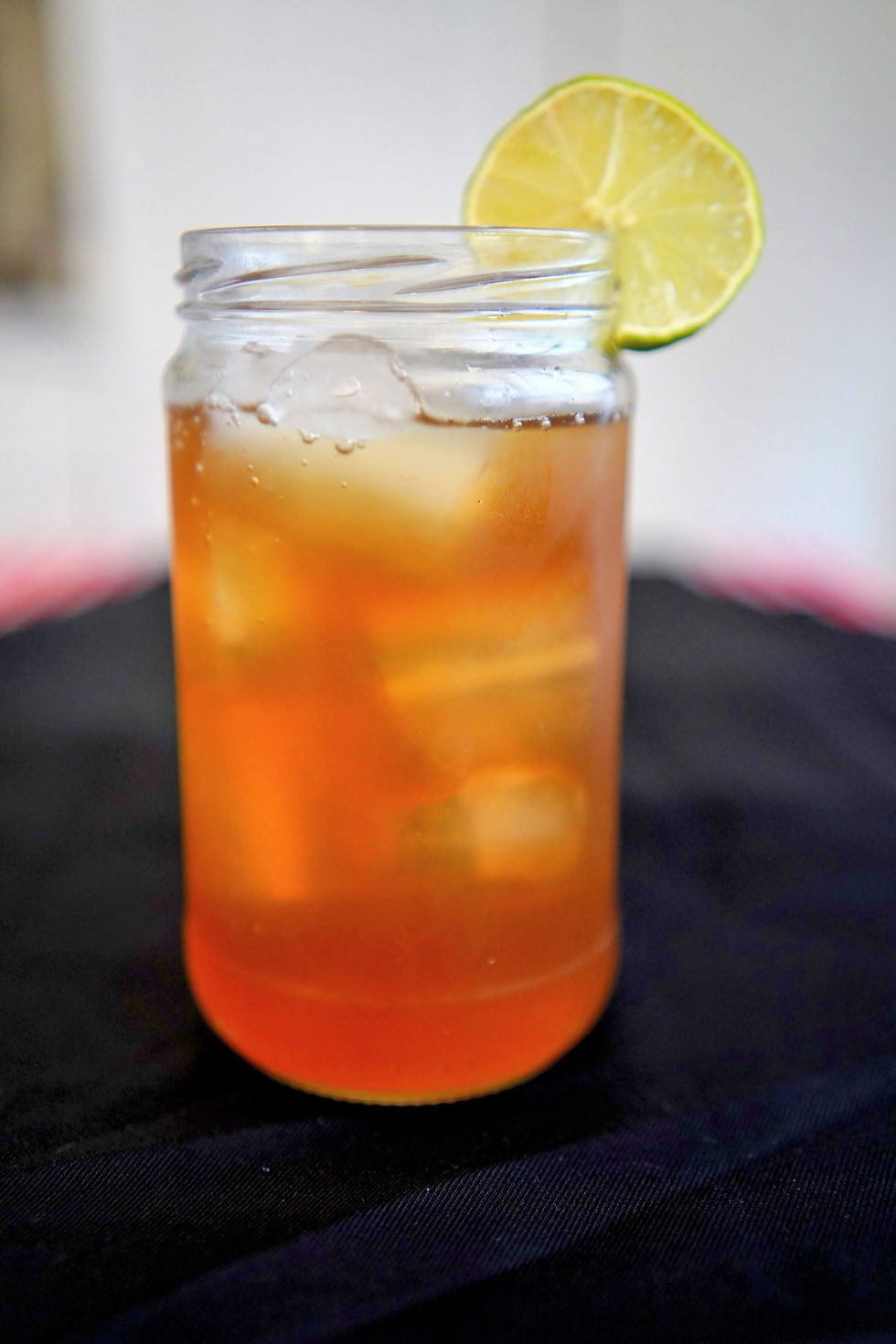Bissap Recipe- A Sweet and Sour Taste of West Africa
- Pierce Jones
- Jul 28, 2024
- 3 min read
Updated: Nov 25, 2024
A delightfully sweet and sour hibiscus drink.
Click here for video recipe and story on Instagram

Bissap is a popular West African drink made from the dried calyces of the hibiscus flower, also known as "roselle." This refreshing beverage is enjoyed across the region, particularly in Senegal, where it holds cultural significance. Bissap is known for its deep red color and tangy, slightly sweet flavor, often compared to cranberry juice.
The history of bissap dates back centuries, with its roots in ancient African herbal traditions. Hibiscus plants are native to tropical regions and have been cultivated for their medicinal and culinary uses.
Bissap is typically prepared by boiling the dried hibiscus petals, straining the liquid, and sweetening it with sugar. Variations of the drink may include flavors like mint, ginger, or orange blossom water, enhancing its taste and health benefits.
In West African culture, bissap is more than just a drink; it's a symbol of hospitality and celebration. It's commonly served at social gatherings, festivals, and special occasions, offering a cooling respite in the region's warm climate. Bissap has also made its way to other parts of the world, where it's enjoyed for its refreshing qualities and vibrant color.
Overall, bissap reflects the rich culinary heritage of West Africa, blending natural ingredients with traditional practices. It's a drink that brings people together, honoring both the history and communal spirit of the region.
Bissap Recipe
Prep time 5 minutes | Cook time 15 minutes | Serves 4
Ingredients:
2 cups dried hibiscus petals (bissap)
8 cups water
1 cup sugar (adjust to taste) - Less sugar is more sour/bitter
1 bunch fresh mint leaves (optional)
1/2 lemon, juiced
Ice cubes
Fresh mint leaves or lime slices for garnish (optional)
Instructions:
Rinse the Hibiscus Petals: Place the dried hibiscus petals in a bowl and rinse them thoroughly under cold water to remove any dust or impurities.
Boil the Water: In a large pot, bring the 8 cups of water to a boil.
Add Hibiscus and mint: Once the water is boiling, add the rinsed hibiscus petals and mint (if using) to the pot. Reduce the heat and let it simmer for about 10-15 minutes.
Strain the Liquid: Remove the pot from the heat and let it cool slightly. Using a fine mesh strainer, strain the liquid into a large bowl or pitcher to remove the hibiscus petals and mint. Discard the solids.
Sweeten the Drink: Stir in the sugar while the liquid is still warm, ensuring it dissolves completely. Add in lemon juice as well.
Add Flavors: Let it steep for another 5-10 minutes for the flavors to infuse.
Chill the Bissap: Allow the bissap to cool to room temperature, then refrigerate it for at least 1-2 hours until it's thoroughly chilled.
Serve: Fill glasses with ice cubes and pour the chilled bissap over the ice. Garnish with fresh mint leaves or lime slices if desired.
Enjoy this refreshing and vibrant drink, perfect for a hot day or any festive occasion!
If you do make this recipe, don’t forget to tag me on Instagram or Pinterest – seeing your creations always makes my day. Let's explore international cuisine together!
If you want to try to make more flavors of Africa, check out the links my recipes below.
East Africa
Djiboutian Skoudehkaris - A deeply rich beef and lamb rice dish
Kenyan Kuku Paka - A creamy coconut chicken curry
Malawian Zitumbuwa - Crispy banana fritters
Mozambican Matapa - A thick and hearty peanut and greens stew
Somali Baasto - A East Africa take on a traditional Italian meat and pasta dish.
Tanzanian Coconut Pilau - A creamy coconut infused rice dish.
Southern Africa
Namibia Potjiekos - A hearty beef stew.
Zambian Ifisashi - A rich peanut and greens stew.
West Africa
Cameroonian Poulet DG - A spicy and vibrant chicken one pot with plantains
Chadian Daraba - A peanut and greens stew
Guinean Kansiye - A vibrant beefy peanut stew
Malian Tigue Degue - A rich and satisfying peanut chicken stew
Nigerienne Djerma Stew - A complex, tomato peanut infused chicken stew
Senegalese Poulet Yassa - A cheerful caramelized onion and lemon one pot.
Comments